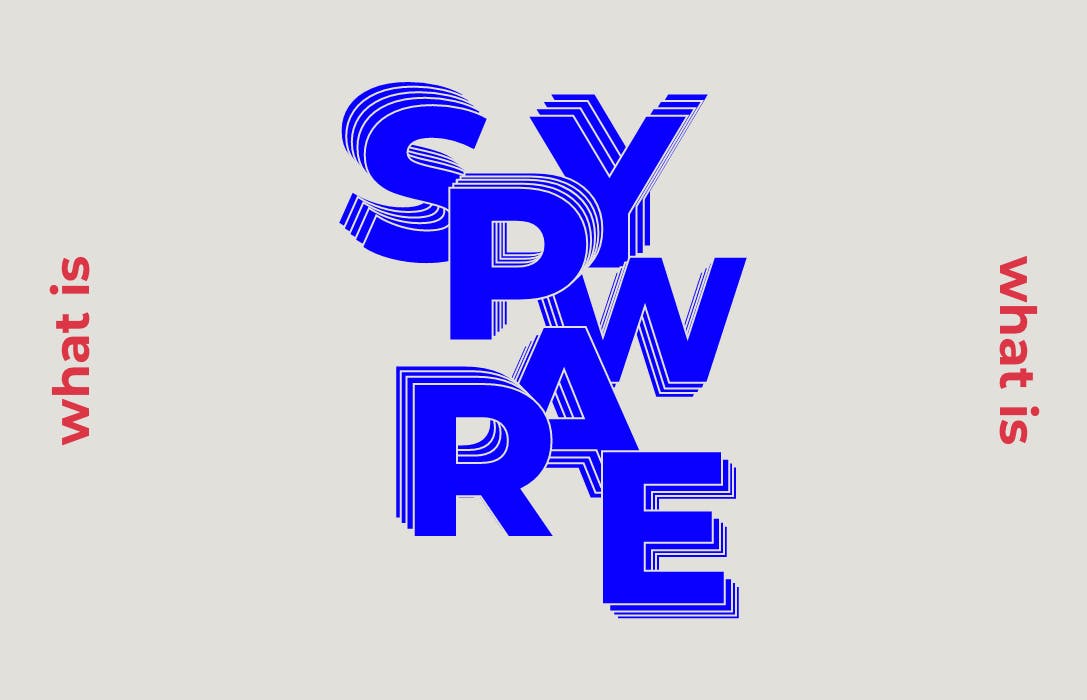Threats actors have a variety of sophisticated cyber attack techniques in their pocket, and using malware is one of the popular ways that targets the weakest link in the cybersecurity chain — peopleweakest link in the cybersecurity chain — people.
Spyware is a type of malware that, as its name suggests, spies infected endpoints. Spyware is designed to monitor and track user activities and steal information that may put users at risk of a larger cyber attack that leverage social engineering techniques.
How Does Spyware Work?
Typically, spyware is embedded in free software downloads or crack programs that users acquire through the Internet or via phishing emails. Sometimes, spyware is even included as part of a bundle with genuine and legitimate software. This way, when users download and install the software, they install the spyware as well. Once on their computer or mobile device, spyware can execute an array of covert operations including keylogging, recording of sensitive information and user activity, and worst of all — remotely control infected devices.
However, not all spyware are unauthorized. Some commercial spyware are authorized by organizations to covertly monitor their assets and systems.
How Does Spyware Put You At Risk?
Losing personal and confidential information to hackers may lead to identity fraud as well as other cyber attacks including credential stuffingother cyber attacks including credential stuffing. If a user stores financial documents, private photos, and credentials on their device, sophisticated spyware can navigate their device to gain illegitimate access to such confidential data, without the user’s knowledge.
Different Types Of Spyware
The most well-known type of spyware are:
Keyloggers – Also known as system monitors, keyloggers are designed to record your computer’s activity, including keystrokes, search history, email activity, chat room communications, websites accessed, and system credentials.
Adware – Automatically displays advertisements while you’re browsing the internet or using advertising-supported software. In a malware context, adware can be secretly installed on your computer or mobile device, spies on your browsing history, and then serve you intrusive ads.
Password Stealers – Password stealers collect passwords entered into an infected device. These may include things like system login credentials or other similar critical passwords.
Infostealers – When a PC or other device is infected with this type of spyware, it can provide third parties with sensitive information such as passwords, usernames, email addresses, log files, browser history, system information, spreadsheets, documents, and media files. Infostealers usually take advantage of browser security vulnerabilities to collect personal data and other sensitive information.
Banking Trojans – Like infostealers, banking trojans take advantage of browser security vulnerabilities to acquire credentials from financial institutions, modify transaction content or web pages, or insert additional transactions, among other things. Banks, online financial portals, brokerages, digital wallets, and all types of other financial institutions can fall prey to these banking trojans.
How To Tell If Your Device Is Infected
Spyware can be difficult to recognize on your device. By its nature, it is designed to be hard to find. But there are clues that can help you identify whether you’ve been infected by spyware. You may have a spyware issue if your computer shows these symptoms:
- Your device runs slower than normal
- Your device freezes or crashes frequently
- You start getting a ton of pop-ups
- Your browser homepage changes unexpectedly
- New and/or unidentifiable icons appear in the taskbar
- Web searches redirect you to a different search engine
- You start getting random error messages when using apps that you’ve never had issues with before
How To Remove And Prevent Future Cases Of Spyware
Spyware can be harmful, but it can be removed and prevented by being cautious and using real-time protection such as antivirus. Some big companies may use Endpoint Detection and Response (EDR) tools and other similar endpoint security tools to detect such malware.
Like with many other cyber attacksmany other cyber attacks, the best defense against spyware starts with your behavior. Follow these basic cyber hygiene habitsFollow these basic cyber hygiene habits:
- Do not open emails from unknown senders.
- Do not download files unless they come from a trusted source.
- Mouseover links before clicking on them and make sure you’re being sent to the right website
- Use reputable cybersecurity software to counter advanced spyware. Prioritize software that comes with real-time protection.
Closing Thoughts
Using the Internet comes with risk, but your vigilant behavior can greatly mitigate the risk of accidentally installing spyware and other malwarespyware and other malware on your device.



